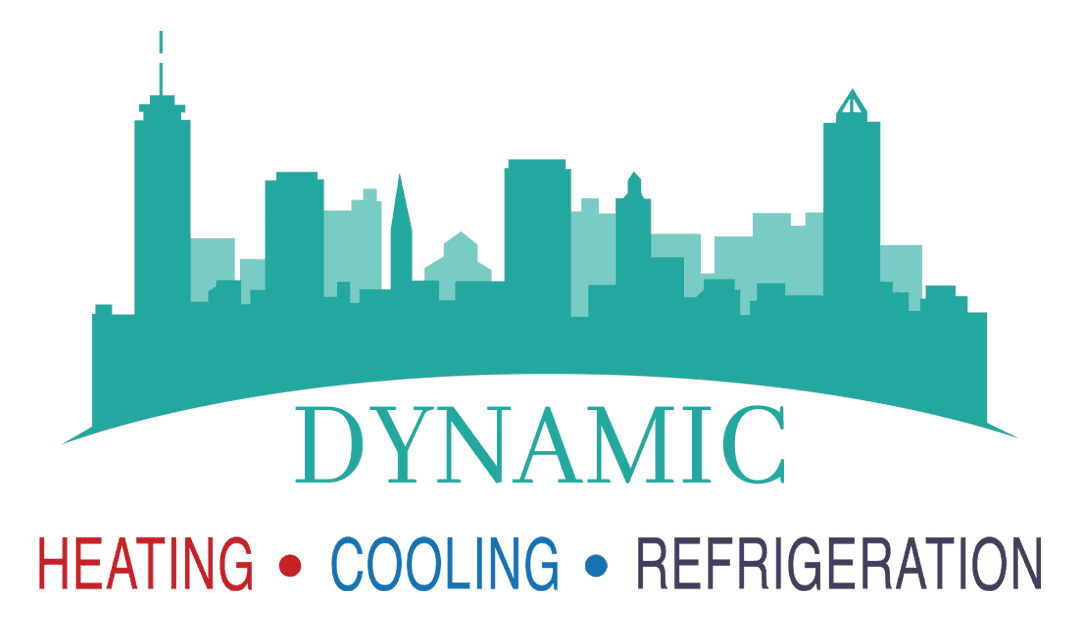This comprehensive guide will discuss the easy steps you can take to care for your heat pump system, ensuring it runs smoothly and efficiently. We’ll cover everything from regular maintenance tips to addressing common issues, empowering you to keep your heating and cooling system in optimal condition. Additionally, we’ll explore the essential aspects of professional heat pump maintenance, covering the critical tasks and inspections performed by HVAC specialists.
Keep reading to learn how to maintain your heat pump effortlessly, and enhance its longevity, saving time and money on potential heat pump repairs.
Why Diligent Heating Maintenance is Important
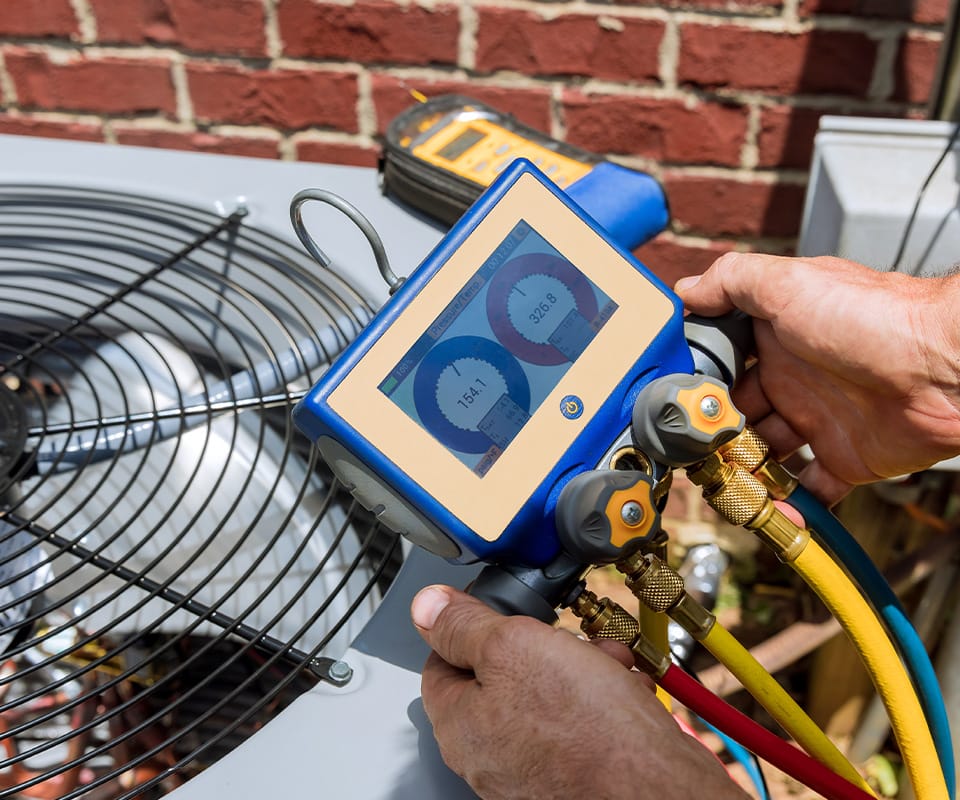
Maintaining your heat pump is an aspect of home care that is sometimes overlooked. Heat pumps, functioning year-round to provide efficient heating in winter and cooling during warmer months, require proper maintenance. Forbes Home suggests that by consistently maintaining your heating and cooling system, you can extend its lifespan and ensure sustained efficiency over time.
Homeowners Often Overlook Heat Pump Maintenance
The oversight in regular heat pump servicing and upkeep, including heat pump cleaning, heat pump repairs, and preventative heat pump maintenance, may inadvertently lead to decreased efficiency, increased energy consumption, and potential system malfunctions.
As stated by the U. S. Department of Energy, the energy consumption of a well-maintained heat pump differs by around 10% to 25% compared to one that’s significantly overlooked in maintenance.
Neglecting routine care for your heat pump, whether cleaning, servicing, or repairs, could impact its performance, lifespan, and overall cost-effectiveness. Therefore, ensuring regular attention to your heat pump’s maintenance is imperative for optimal energy efficiency, durability, and sustained comfort within your home’s climate control system.
What Maintenance Does a Heat Pump Require?
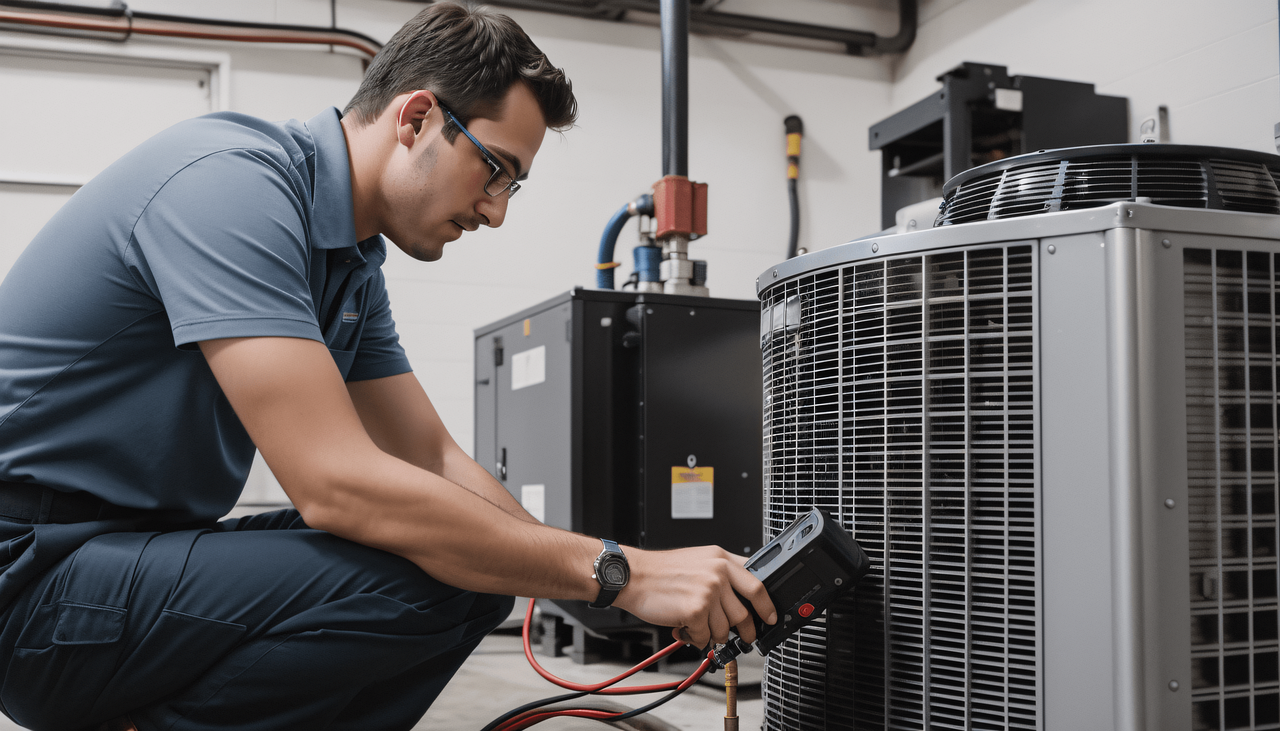
Heat Pump Maintenance involves dedicated attention to various essential aspects of its smooth operation and efficiency. Do not fret; the Renewable Energy Hub of the UK states that a well-installed air or ground source heat pump system of good quality demands minimal upkeep that is easy to maintain and designed to endure for approximately 20-30 years.
DIY Preventative Maintenance
Homeowners can proactively maintain their heat pumps by regularly performing critical tasks, including cleaning heat pumps and understanding how to clean a heat pump system properly.
It’s important to note that while you can manage basic cleaning tasks, exercising caution is paramount due to the involvement of high voltage and refrigerant chemicals. Managing heat pumps repairs, including cleaning filters, coils, and fans, is manageable with adherence to safety protocols and consultation with the owner’s manual for proper guidance. Handling these components cautiously contributes to their extended lifespan and ensures their effective functioning within the system.
By attending to these heating maintenance tasks diligently and following safety guidelines, homeowners can significantly contribute to the efficient operation and longevity of their heat pump systems, ensuring consistent performance and optimal comfort within their homes.
There are three effective DIY methods to maintain your heat pump’s cleanliness and efficiency:
Filter Cleaning
To maintain efficient airflow, it’s essential to clean or replace filters every month. Clogged filters restrict airflow, which diminishes the system’s performance, impacting its ability to heat or cool effectively.
Here’s a how-to guide for cleaning a heat pump’s filters:
- Turn Off the Heat Pump: Before starting, ensure the heat pump is turned off to avoid any potential hazards.
- Locate the Filters: Find the filters in your heat pump system. They are typically located in the return air duct or within the indoor unit.
- Remove the Filters: Carefully remove the filters from their housing. Take note of their positioning to ensure correct reinstallation.
- Inspect the Filters: Check the condition of the filters. If they are disposable, evaluate whether they need replacement. If reusable, assess their cleanliness.
- Cleaning Disposable Filters: If disposable, replace them with new filters per the manufacturer’s recommendations.
- Cleaning Reusable Filters: For reusable filters, gently vacuum off loose debris or use warm, soapy water to clean them. Thoroughly rinse and allow them to completely dry before reinstalling.
- Reinstall the Filters: Put the filters back in their correct position, ensuring they are securely placed and facing the right direction.
- Turn On the Heat Pump: Once filters are properly reinstalled, turn the heat pump back on and verify that it’s functioning correctly.
Outdoor Unit Care
Maintaining the outdoor unit of your heat pump is pivotal for optimal heat pump maintenance. As part of routine heat pump servicing and cleaning, the outdoor unit requires regular attention to prevent issues like dirt and debris accumulation, which can impede the system’s performance. Especially during warmer seasons, heating maintenance involving the cleaning of the outdoor unit becomes crucial to ensure unobstructed airflow and the prevention of potential system breakdowns.
A proactive approach to heat pumps repairs includes simple steps like regular cleaning, enhancing the system’s efficiency, and avoiding unnecessary costs associated with extensive heat pump repair.
Follow this how-to guide for outdoor unit care for your heat pump:
Materials Needed:
- Garden hose
- Soft-bristled brush or cloth (if needed)
- Protective gloves (optional)
Steps:
- Safety First: Before starting, ensure the heat pump is switched off to avoid any potential hazards.
- Visual Inspection: Check the outdoor unit for visible dirt, dust, or debris accumulation.
- Prepare the Garden Hose: Attach the garden hose to an outdoor water supply.
- Begin Cleaning: Use the garden hose to gently spray the outdoor unit, starting from the top and working your way down. Focus on removing dirt and debris from the unit’s fins, coils, and surrounding areas.
- Stuck Debris: For stubborn debris, you can use a soft-bristled brush or cloth to gently loosen and remove it. Avoid using excessive force to prevent damage to the unit’s components.
- Avoid High-Pressure Water: Do not use high-pressure water, as it may bend or damage the fins of the unit.
- Check Drainage: Ensure that the area around the unit allows for proper drainage after cleaning. Remove any debris or obstructions that may hinder drainage.
- Allow Drying: Let the outdoor unit air dry completely before turning the heat pump back on.
Important Safety Tips:
- Wear protective gloves, especially if handling potentially sharp debris.
- Avoid using harsh chemicals or cleaners, as they can damage the unit.
- Ensure the power supply to the unit is switched off before starting the cleaning process.
Clear Surroundings for Your Heat Pump’s Outdoor Unit
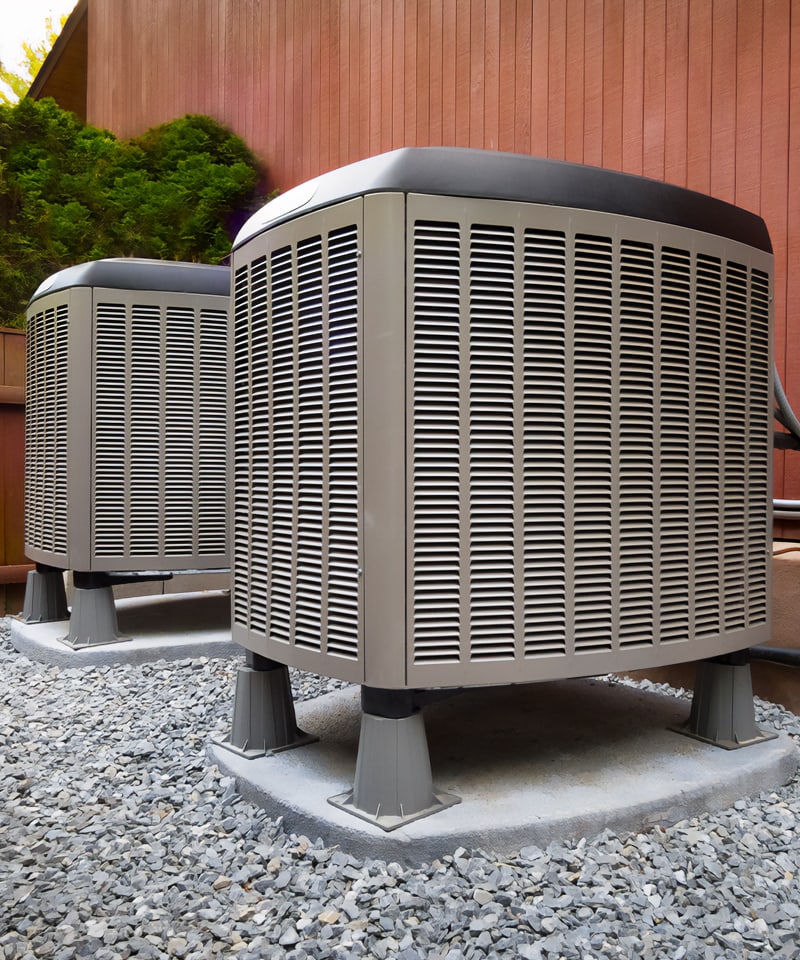
In addition to cleaning the outdoor unit, maintaining a clear surrounding area for your heat pump is crucial in ensuring optimal heat pump maintenance. Regularly clearing the space around the outdoor unit from potential obstructions, such as tall grass, leaves, or accumulated debris, plays a significant role in preserving the system’s efficiency. Unobstructed airflow around the unit is essential for its consistent and optimal performance.
Blockages or hindrances can impede the system’s ability to function efficiently, reducing airflow and potential strain on the heat pump.
This how-to guide is a useful resource for clearing the surroundings for your heat pump’s outdoor unit.
Materials Needed:
- Protective gloves
- Rake or broom
- Trash bags or bins
Steps:
- Safety First: Before starting, ensure the heat pump is turned off to avoid any potential hazards.
- Visual Inspection: Walk around the outdoor unit and inspect the surrounding area for any obstructions, such as tall grass, leaves, or debris.
- Clear Debris: Use a rake or broom to gently remove any leaves, twigs, or debris that have accumulated around the unit. Collect them in a trash bag or bin for disposal.
- Trim Vegetation: If there’s tall grass or overgrown vegetation near the unit, carefully trim it to maintain a clear perimeter around the heat pump.
- Dispose of Debris: Properly dispose of collected debris to prevent it from accumulating around the unit again.
Here are a couple of safety tips to note:
- Wear protective gloves while handling debris to avoid any injuries.
- Ensure the power supply to the unit is turned off before starting the clearing process.
- Regularly performing this clear surroundings routine around the outdoor unit ensures unobstructed airflow, contributing to the efficient operation and longevity of your heat pump system.
This simple yet essential maintenance task helps prevent potential issues caused by blockages, promoting consistent and optimal heat pump performance.
Check the Thermostat Functionality for Heat Pump Maintenance
An essential step in ensuring your heat pump’s efficiency is to regularly inspect and verify the functionality of your thermostat. Begin by ensuring the thermostat is set to the desired temperature for your comfort needs and the current season. Check that it accurately reflects the indoor temperature and engages the heat pump appropriately.
A malfunctioning thermostat can significantly impact the efficiency of your heat pump system. Inaccurate temperature readings or a faulty thermostat setting may cause the heat pump to cycle incorrectly, leading to inefficient operation and potential energy wastage. It’s advisable to periodically test the thermostat by adjusting the temperature settings and observing the heat pump’s response. Any irregularities or inconsistencies in temperature regulation could indicate a malfunctioning thermostat.
Regularly checking and maintaining the thermostat’s proper functionality is a simple yet crucial DIY task that can contribute significantly to the overall efficiency of your heat pump system.
Should you notice any persistent issues or suspect thermostat malfunctions, seeking professional assistance in heat pump servicing or heat pump repairs is recommended to ensure accurate temperature control and optimal performance of your heat pump.
Explore additional information about thermostat functionality here.
Additional Tips for Heat Pump Maintenance
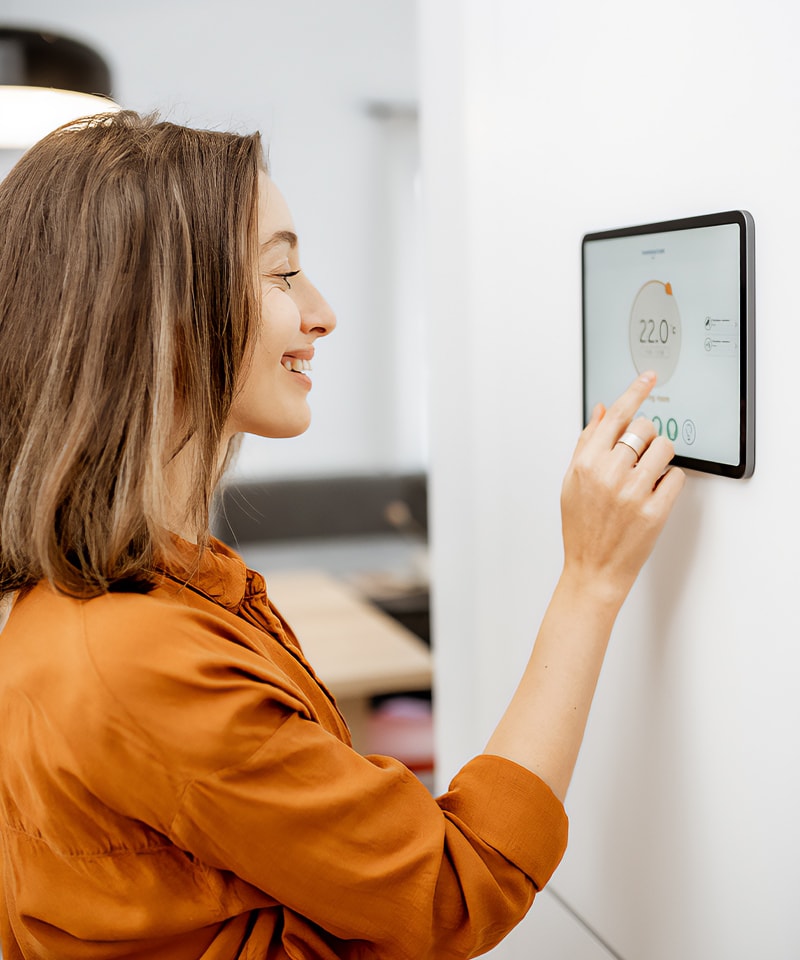
- Thermostat Settings: Ensure consistent thermostat settings to avoid increased utility costs, limiting adjustments to twice daily during setback periods (like when at work or asleep).
- Adjustment Limit: Aim to adjust the thermostat by around 6% of the desired temperature, approximately five degrees, to prevent drastic temperature changes.
- Temperature Limits: During heating seasons, avoid setting the thermostat below 65 degrees. Avoid setting it below 70 degrees in cooling mode to prevent indoor coil freezing and condensation.
- Gutter Placement: Avoid placing the outdoor unit under leaking gutters that may freeze and obstruct airflow.
- Elevation: Elevate heat pumps 10 to 20 centimetres above ground level to prevent snow buildup.
Should I Leave My Heat Pump on All the Time?
There’s a notable difference compared to traditional heating methods like electric baseboards or hot water systems. Natural Resources Canada explains that while these conventional systems are often used on-demand, a heat pump operates uniquely by extracting heat from the outdoors to warm your home.
The initial phase after turning on a heat pump demands more energy as it ramps up to reach the desired indoor temperature. However, once this level is attained, the heat pump efficiently maintains the set temperature with reduced energy consumption. Contrary to the practice of turning traditional systems on and off for energy conservation, leaving a heat pump system running consistently results in greater energy efficiency.
This shift toward constant operation ensures a more consistent and comfortable indoor climate and aligns with the principles of efficient heat pump usage.
Check out this page for more answers to frequently asked questions regarding heat pump maintenance and heat pump servicing.
Professional Preventative Heat Pump Service
At Dynamic Heating and Cooling, our professional preventative heat pump servicing is designed for a comprehensive inspection, guaranteeing your heat pump’s seamless functionality. Our skilled HVAC technicians meticulously inspect each crucial aspect of your heat pump’s operation.
Thermostat and Controls Inspection

We verify the accuracy and functionality of your thermostat and controls, ensuring seamless communication with the heat pump.
Explore additional information about Thermostat Functionality here.
Indoor and Outdoor Unit Cleaning
Our service includes a meticulous cleaning of both indoor and outdoor units. We meticulously inspect these units for any debris, dirt, or obstructions that might impede airflow, cleaning them thoroughly as needed.
Air Filter Check and Replacement
We thoroughly check the air filters, promptly replacing any that are dirty or clogged. Dirty filters can significantly reduce airflow and strain the entire system.
We recommend reading this short article to learn about the potential dangers of poor indoor air quality caused by clogged-up air filters.
Coil Cleaning and Refrigerant Levels
We focus on the critical components of your heat pump – the evaporator and condenser coils. Dirty coils can substantially hamper the efficiency of your system. We clean these coils to ensure optimal efficiency. Additionally, we check and adjust refrigerant levels, ensuring they are sufficient for efficient operation. In a British study conducted in 2014, it was discovered that approximately 10% of residential heat pumps experienced leaks, Eunomia states.
Efficiency Canada confirms that good maintenance and installation practices reduce refrigerant leaks.
Blower and Ductwork Inspection

Our service includes a detailed inspection of the blower for any dirt or clogs that might reduce airflow and efficiency. We also inspect the ductwork, sealing any gaps or leaks that could result in the loss of heated or cooled air, thus improving overall efficiency.
Learn why Ductwork Inspection can go a long way here.
Electrical Connections Assessment
We meticulously examine all electrical connections, addressing any loose or corroded connections that can reduce the system’s efficiency or cause a breakdown.
Comprehensive System Testing
Finally, we conduct a system-wide test to ensure the heat pump functions optimally. This includes testing the thermostat, controls, and safety features to ensure everything operates flawlessly.
Schedule your comprehensive heat pump inspection today to ensure your system’s safe and efficient operation.
Why Heat Pump Maintenance Is Better Than Heat Pump Repairs
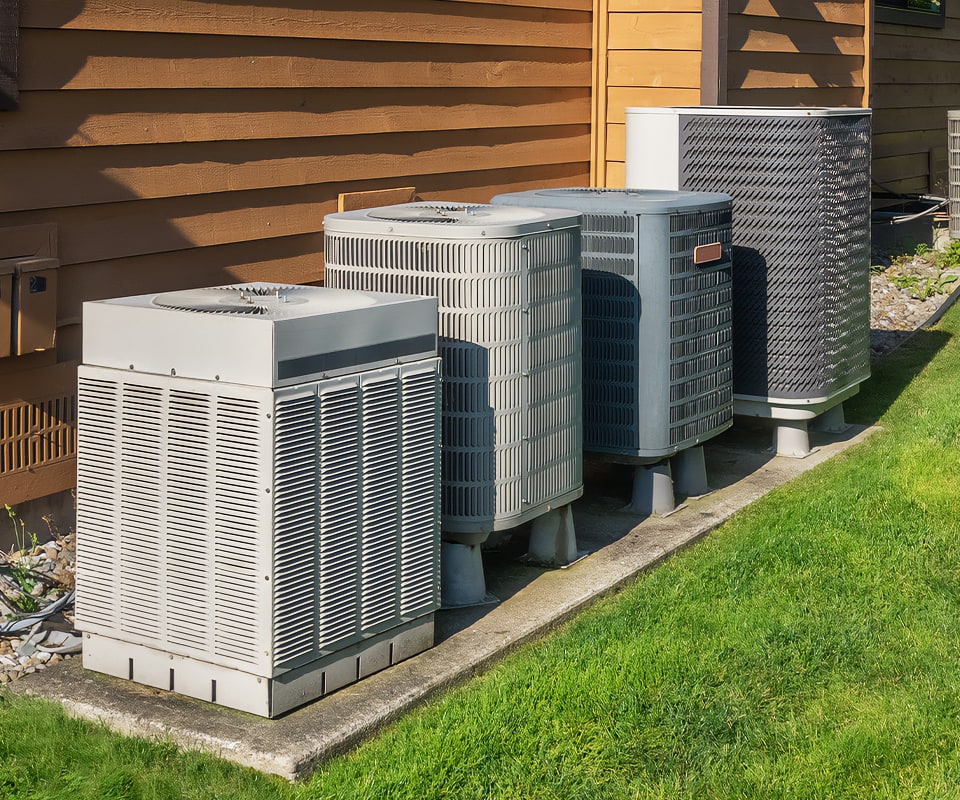
Ensuring the regular upkeep of your heat pump through heat pump servicing and heat pump cleaning proves to be far more advantageous than dealing with unforeseen heat pump repairs down the road. By adopting a proactive stance in conducting routine heating maintenance and mastering the art of how to clean a heat pump, you significantly contribute to extending the equipment’s lifespan and preserving its efficiency. This method dramatically reduces the likelihood of extensive heat pump repair or repeated heat pump repairs, providing heightened reliability and a lowered risk of encountering critical issues.
At Hamilton-based Dynamic Heating & Cooling, our certified technicians bring years of expertise, ensuring prompt and efficient service. We prioritize exceptional customer service and offer flexible scheduling options to suit your needs. With our comprehensive maintenance service plans, you can rest assured your system is in top condition.
Wondering about affordability? Our heat pump maintenance plans start at just $26.99 a month, making them an accessible choice for maintaining your system’s smooth operation.
Curious about the time investment? A typical heat pump maintenance appointment usually spans between 1-2 hours, contingent on the system’s complexity. For your convenience, we offer emergency services 24/7, ensuring your comfort and safety remain uninterrupted. Contact Dynamic Heating and Cooling today to schedule your heat pump maintenance service in Hamilton and keep your system performing at its best.
